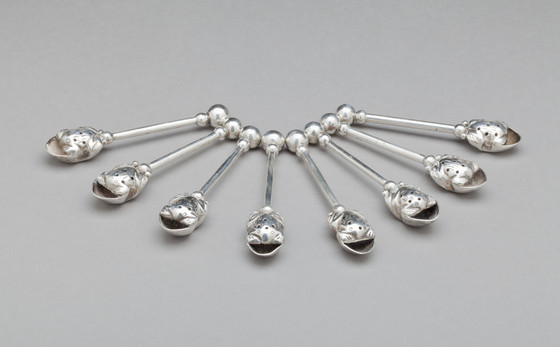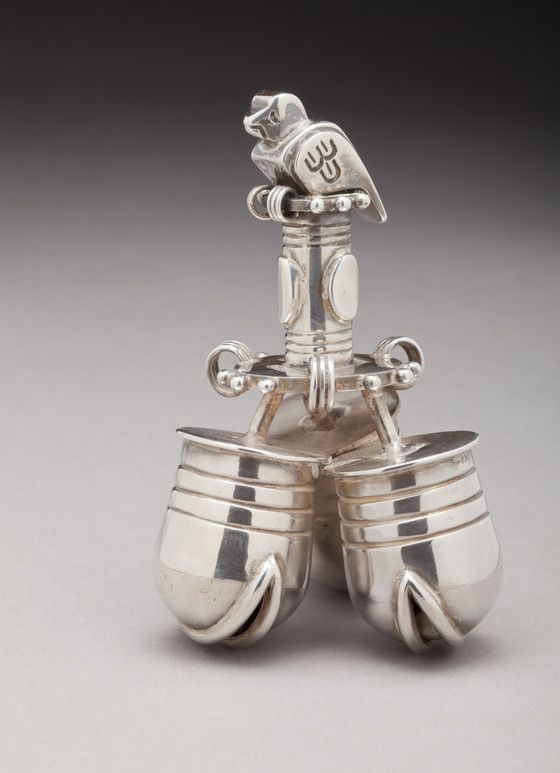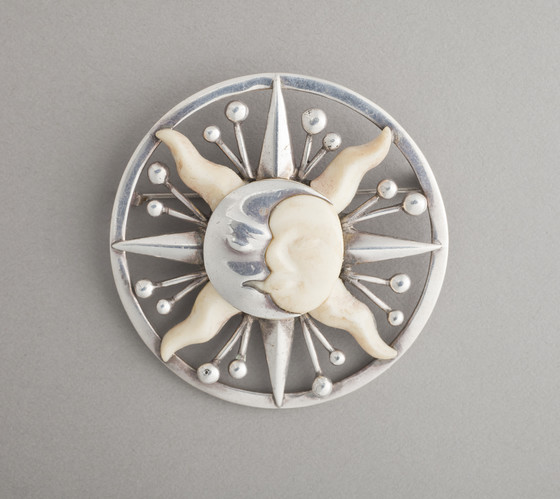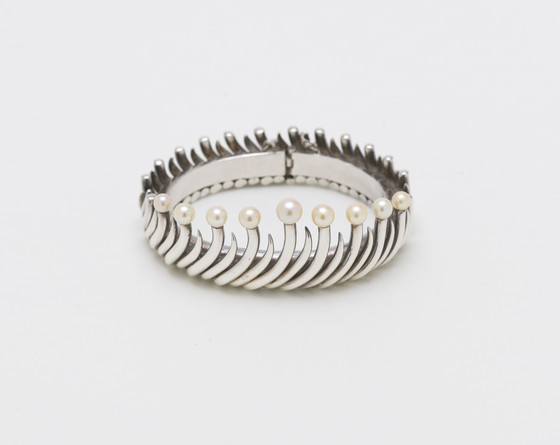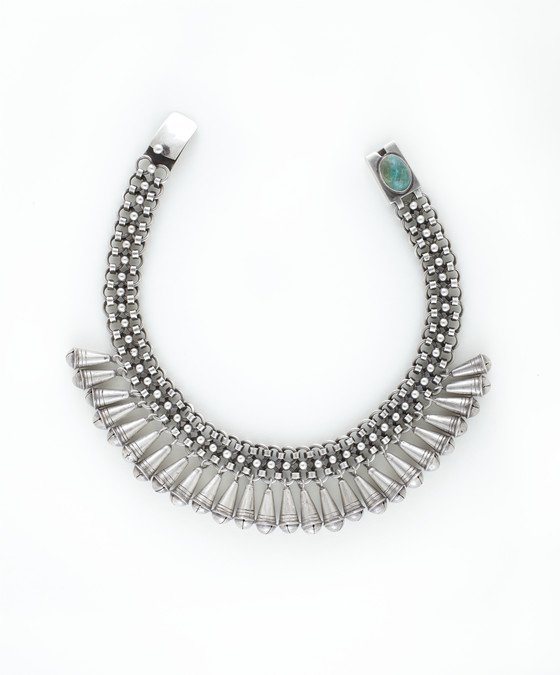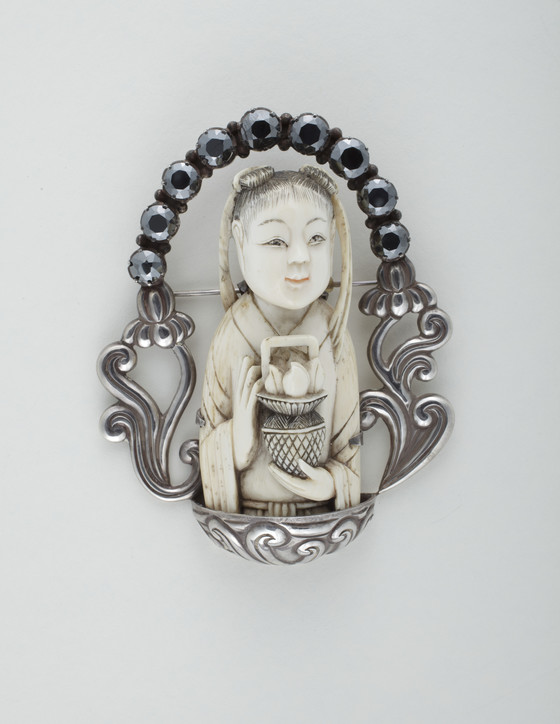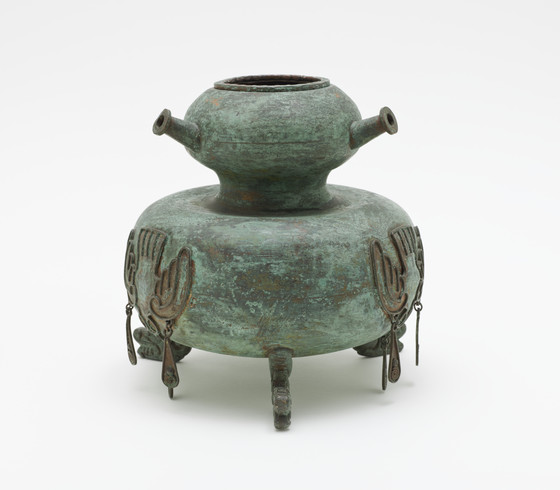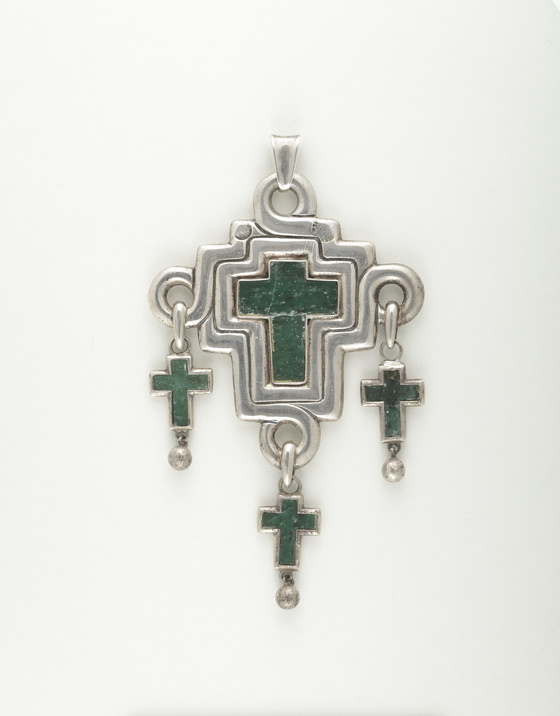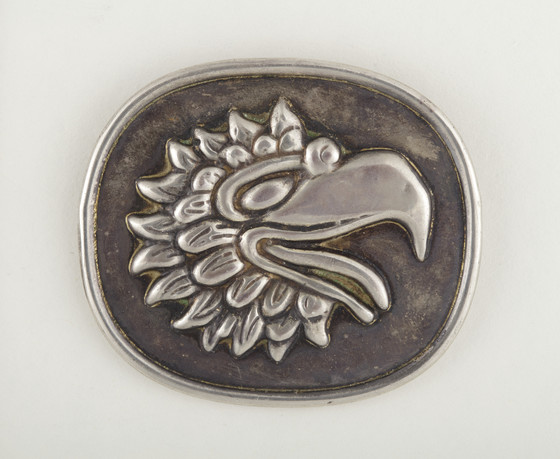In the twentieth century the Mexican silver industry experienced an unprecedented resurgence. Two North Americans catalyzed this renaissance. In the mid-1920s, Frederick Davis opened a gallery in Mexico City and developed a line of handwrought silver jewelry. William Spratling, an architect from New Orleans, established a workshop in Taxco in 1931 where he worked alongside a local master silversmith and a handful of young men. A brilliant marketing strategist Spratling reinvigorated Taxco’s economy by employing hundreds of local artisans and creating a thriving local industry. Other designers–several represented in LACMA’s collection–followed and established equally successful workshops.
Insistence on handwork and the value placed on experimentation impelled the achievement of the Mexican silver movement. Designers and craftsmen drew on pre-Columbian art, the Arts and Crafts movement, Art Deco, and modernism, resisting slavish imitation in favor of technical and formal innovation. Many objects on view in LACMA’s collection reveal a fascination with indigenous cultures and ancient Mesoamerican forms and materials. The artworks were worn and collected by people worldwide, including artists, writers, and politicians: George Gershwin, Leopold Stokowski, Mae West, Leon Trotsky, Frida Kahlo, Diego Rivera, Miguel and Rosa Covarrubias, and Aldous Huxley all traveled to the quaint colonial town of Taxco, largely attracted by the revolution in Mexican silver. These objects were also popular among the Hollywood crowd–John Huston and Bette Davis both visited Spratling’s ranch. After a trip to Mexico in 1962, Marilyn Monroe commissioned Spratling to design the furniture for her Brentwood home in Los Angeles.
- Ilona Katzew, 2013
The Silver World of Graziella Laffi
Graziella Laffi's jewelry and hollowware reflect the convergence of pre-Columbian imagery and techniques and modern design. Born in Florence, Italy, Laffi studied drawing, painting, and architecture before turning her attention to silversmithing. In 1947, following the throes of World War II, Laffi emmigrated with her parents to Peru. Profoundly fascinated by her adoptive country, she traveled extensively throughout the region, studying many of its antiquities. Significantly, when Laffi arrived in Peru, the country was deeply engaged in a search for its own artistic identity and the proposal to create a national, modern visual vocabulary rooted in pre-Columbian motifs.
The art of ancient Peru was a source of endless inspiration for the artist. Working with native materials and techniques, Laffi reinterpreted pre-Hispanic objects, such as the quero (an Inka ceremonial drinking vessel) and the quipu (a mnemonic recording device made of knots). Some works also include stylized zoomorphic forms such as the crab, identified with an important Moche diety, and tocapus, geometric motifs of lineage, rank, or profession, associated in ancient times with the aristocracy.
- Ellen Dooley and Ilona Katzew, 2014
